Essential Circuit Board Components: A Comprehensive Guide
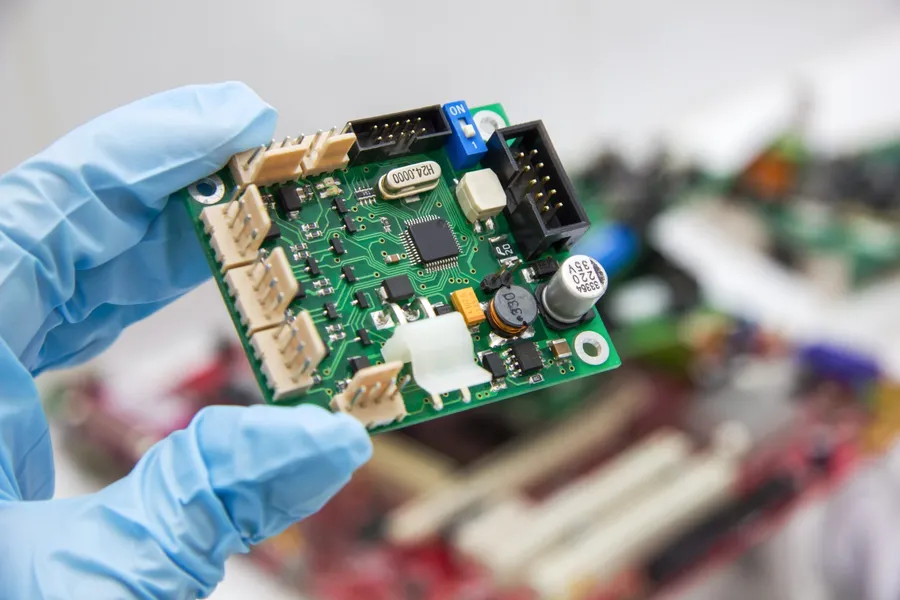
In our increasingly digital world, circuit boards are the unsung heroes powering countless devices, from our smartphones to complex industrial machinery. At the heart of these boards lies a symphony of tiny components, each playing a crucial role. Understanding these components – like resistors, capacitors, and integrated circuits – is not just for engineers; it's for anyone curious about the inner workings of our modern world. This article will serve as a practical guide to demystify the intricate world of circuit board components, connecting their function to our daily lives.
Introduction to Circuit Boards

Circuit boards, also known as printed circuit boards (PCBs), are the foundational building blocks of modern electronics, serving as the structural base and electrical pathway for connecting electronic components. They facilitate the precise and reliable operation of countless devices by providing a structured network of conductive traces and pads, allowing for complex circuits to be assembled in a compact and organized manner. These boards are not merely passive carriers but an integral part of the electronic system's functionality.
The core purpose of a circuit board is twofold: mechanical support and electrical interconnection. The board provides a stable base for mounting components, preventing them from physical damage and ensuring their positions are consistent for reliable operation. Simultaneously, it offers a controlled and predictable network for electrical signals to flow through, dictating how the components interact with one another to execute the desired functionality of the device.
Circuit boards are not monolithic entities; they come in various forms, each suited to specific applications. The most common types include:
- Single-Sided Boards
The simplest type, with conductive traces on only one side of the board. Used for basic circuits and low-density applications. - Double-Sided Boards
Featuring conductive traces on both sides, allowing for more complex circuitry. Widely used in many consumer electronics. - Multi-Layer Boards
Comprising multiple layers of conductive traces separated by insulating material. Essential for high-density, complex electronics, like computer motherboards and advanced communication systems. - Flexible Boards
Made from flexible materials, allowing them to bend and conform to unique shapes. Used in applications where space is limited or dynamic movement is required, such as in smartphones and wearable devices.
Resistors: Controlling the Flow
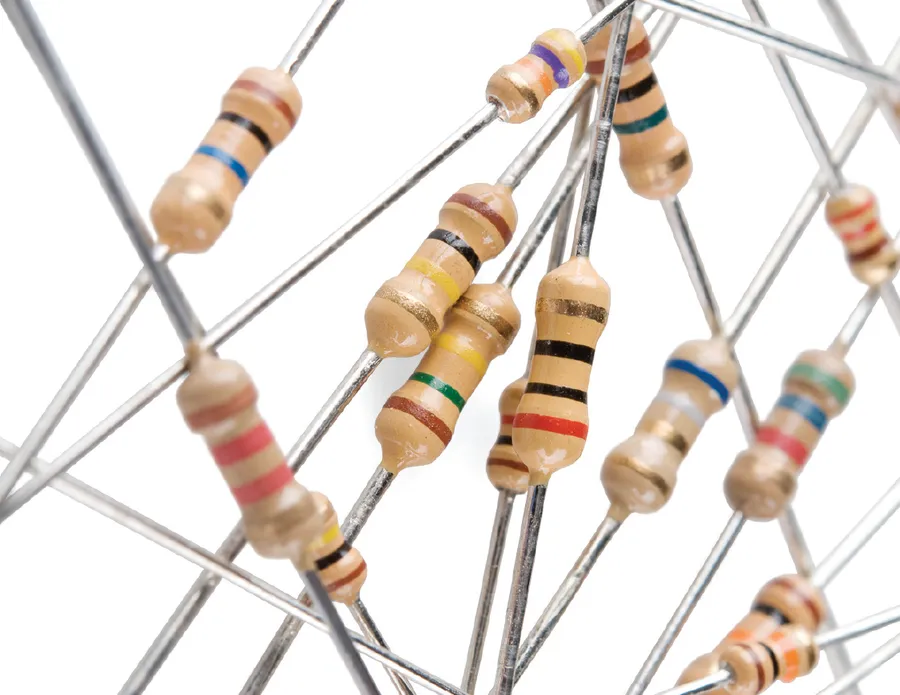
Resistors are fundamental circuit board components that impede the flow of electrical current, functioning like a valve in a water pipe. This impedance is crucial for controlling current levels, voltage division, and signal conditioning within electronic circuits. The value of a resistor, measured in ohms (Ω), determines its resistance to current flow.
Resistors come in various forms, each suited for different applications, and their value is often indicated through color-coded bands or printed markings. Understanding these components is essential for effective circuit design and troubleshooting.
| Resistor Type | Description | Applications | Advantages | Disadvantages |
|---|---|---|---|---|
| Fixed Resistors | Resistors with a predetermined resistance value. | General purpose use, current limiting, voltage division. | Low cost, high availability, reliable. | Limited flexibility, cannot be adjusted. |
| Variable Resistors (Potentiometers, Rheostats) | Resistors with an adjustable resistance value. | Volume controls, calibration, sensors. | Adjustable resistance, versatile. | Can be less precise, potentially less reliable. |
| SMD Resistors | Surface Mount Resistors, smaller and designed for automated assembly. | Modern electronics, high-density circuit boards. | Small size, good for automated assembly. | Difficult to manually solder, limited power handling |
Resistors use a color-coding system to indicate their resistance value and tolerance. Each color corresponds to a numerical value, and the bands are read from left to right. The first few bands represent the resistance value, the subsequent band is the multiplier, and the last band indicates the tolerance, which is the accuracy of the resistance value.
For example, a resistor with color bands of brown, black, red, and gold would have a resistance of 10 * 10^2 ohms, or 1000 ohms, with a tolerance of +/- 5%. Understanding this coding system is crucial for accurately identifying resistor values in circuits.
Capacitors: Storing Electrical Energy
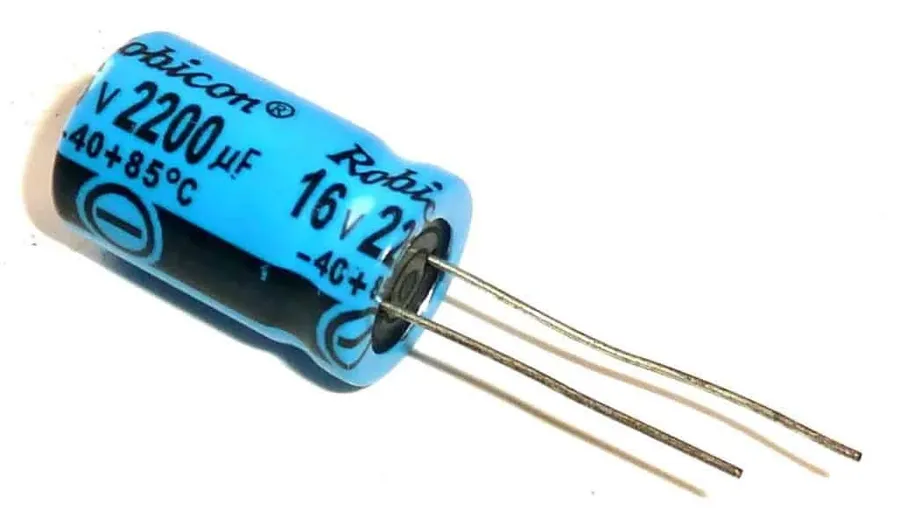
Capacitors are fundamental circuit board components designed to store electrical energy in an electric field. Unlike resistors, which dissipate energy, capacitors accumulate charge and release it when the circuit demands, effectively acting as temporary energy reservoirs. Their ability to store and release energy makes them crucial for various applications such as filtering, smoothing, and timing circuits.
Capacitors are broadly categorized by their dielectric material, which impacts their performance characteristics. The most common types include ceramic and electrolytic capacitors, each suitable for different applications due to their unique attributes:
| Feature | Ceramic Capacitors | Electrolytic Capacitors |
|---|---|---|
| Dielectric Material | Ceramic | Electrolyte (e.g., Aluminum Oxide) |
| Polarity | Non-Polarized | Polarized |
| Capacitance Range | Low to Medium | Medium to High |
| Tolerance | Typically Less Precise | Typically More Precise |
| Frequency Response | Good at High Frequencies | Limited at High Frequencies |
| Size | Smaller | Larger for the same capacitance |
| Applications | High-frequency filtering, decoupling | Power supply smoothing, energy storage |
Capacitor markings vary depending on type and manufacturer, but typically include capacitance value (often in microfarads, nanofarads, or picofarads) and working voltage. These are represented either through direct printing or through alphanumeric codes. For example, '104' represents 100nF(10 * 10^4 pF), and '22uF 16V' specifies capacitance and voltage ratings. Some capacitors may also show tolerance rating or a temperature coefficient.
Inductors: Magnetic Energy Storage
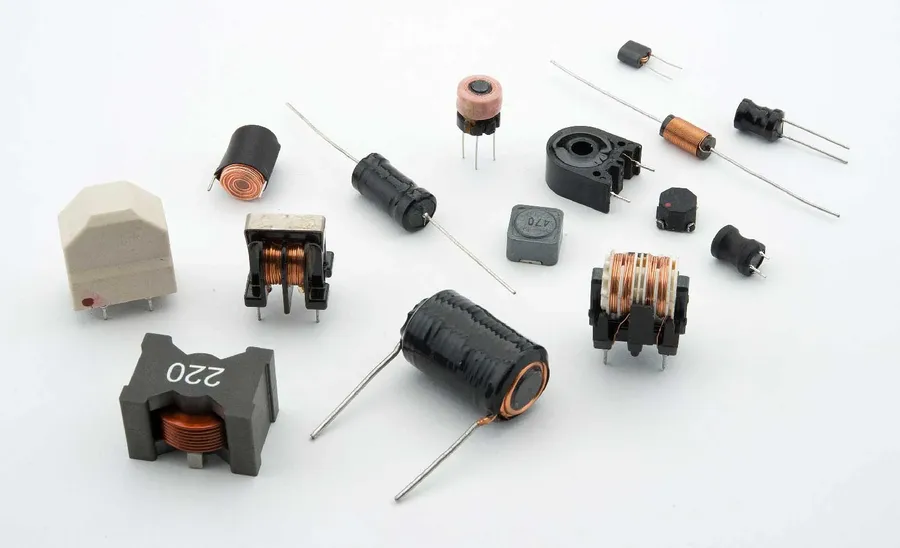
Inductors are fundamental passive electronic components that store energy in a magnetic field when an electric current flows through them. This property makes them indispensable in a wide array of applications, from filtering to energy conversion. They fundamentally oppose changes in current, a characteristic that is leveraged in various circuit designs.
- Function
Inductors store energy in a magnetic field when current flows through them, opposing changes in current flow. This is critical in AC circuits, where the continuous change in current is effectively manipulated by inductors. - Types of Inductors
Various types exist, such as coils (solenoids), chokes (inductors with a core material), and toroidal inductors, each designed for specific applications and frequency ranges. Core materials like ferrite increase inductance. - Applications
Inductors are widely used in filters to block specific frequencies, in transformers for stepping up or down voltage, in energy storage circuits, and in oscillators to generate periodic signals. Their ability to store and release magnetic energy is used in power conversion and radio frequency (RF) circuits. - Impact on Circuit Behavior
In DC circuits, an inductor initially resists current flow, acting as an open circuit, but then settles to act as a short circuit once a steady state is reached. In AC circuits, it offers impedance to the alternating current, with the impedance increasing with frequency. This frequency dependence is key to filtering applications.
| Characteristic | Description |
|---|---|
| Inductance (L) | Measured in Henries (H), defines the inductor's ability to store magnetic energy. |
| DC Resistance (DCR) | Resistance of the inductor's wire to direct current. Lower DCR results in more efficient energy storage. |
| Saturation Current | The maximum current an inductor can handle before its inductance significantly decreases due to core saturation. |
| Quality Factor (Q) | A measure of an inductor's efficiency, reflecting the ratio of inductive reactance to resistance. Higher Q indicates a more efficient inductor for filtering applications. |
Diodes: Directing Current Flow
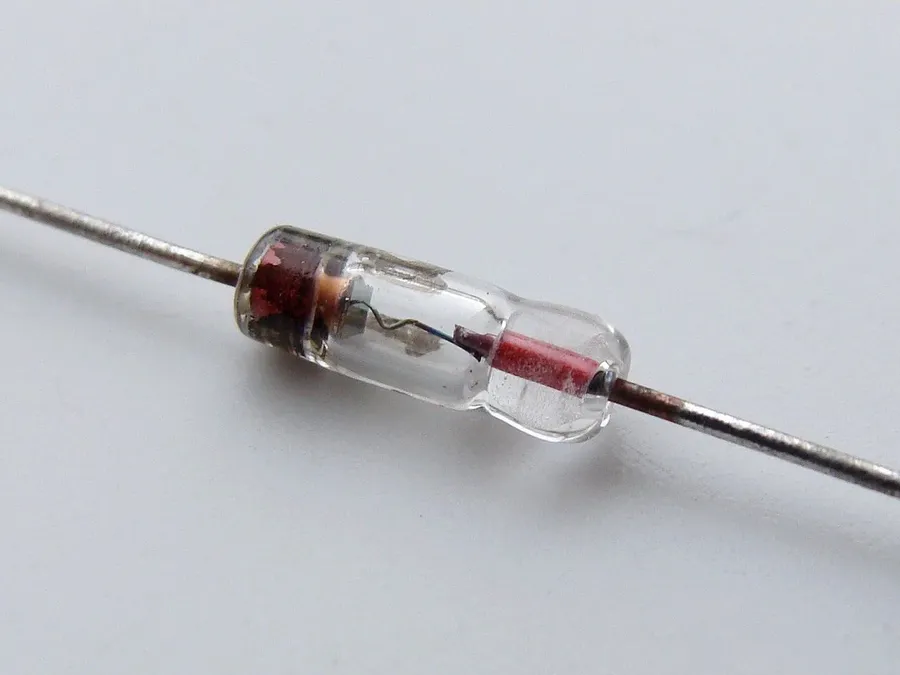
Diodes are fundamental semiconductor devices that act as one-way electrical switches, allowing current to flow primarily in one direction with minimal resistance, while blocking it in the opposite direction. This unidirectional property makes them essential for various electronic functions, including rectification, signal modulation, and light emission.
The core function of a diode stems from its p-n junction, a region formed by joining p-type and n-type semiconductors. When forward biased (positive voltage applied to the p-side), current flows easily. Conversely, under reverse bias (positive voltage applied to the n-side), current flow is negligible. This behavior is critical for controlling current flow in circuits.
| Diode Type | Function | Application | Symbol |
|---|---|---|---|
| Rectifier Diode | Converts AC to DC | Power supplies, signal demodulation | A triangle pointing to a line. |
| Light Emitting Diode (LED) | Emits light when current passes | Displays, indicators, lighting | A triangle pointing to a line, with two small arrows pointing away from the line. |
| Zener Diode | Regulates voltage | Voltage regulation circuits, overvoltage protection | A triangle pointing to a line with two bent tips. |
| Schottky Diode | Fast switching with low voltage drop | High-frequency circuits, switching power supplies | A triangle pointing to a zig-zag line. |
Polarity is a key consideration when working with diodes. The anode (positive terminal) and the cathode (negative terminal) must be connected correctly in a circuit, as incorrect polarity will result in either no current flow or damage to the device. Manufacturers typically mark the cathode with a band, line, or a specific shape on the diode body.
Understanding the different types of diodes and their properties is fundamental for designing and troubleshooting electronic circuits.
Transistors: Amplification and Switching
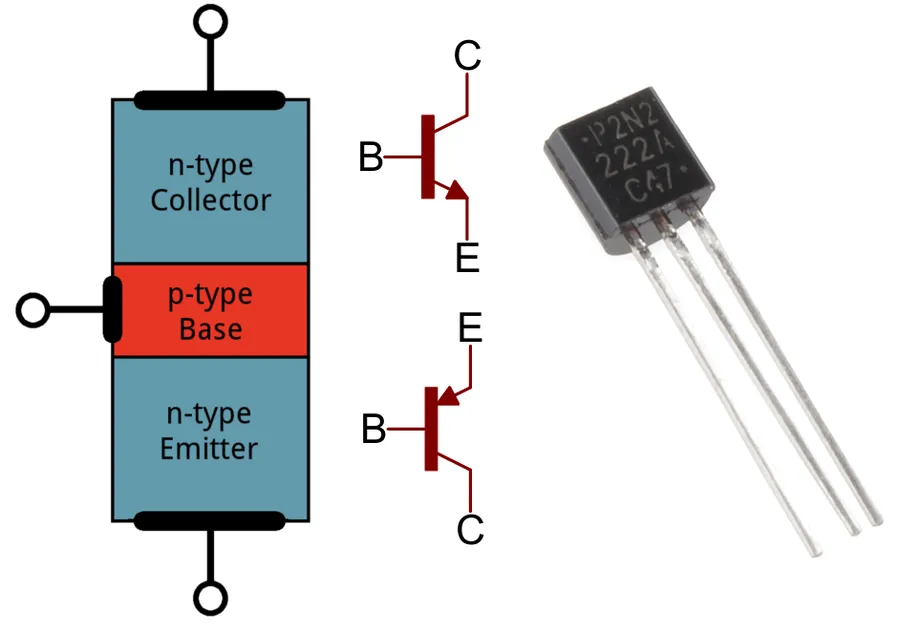
Transistors are fundamental semiconductor devices that act as both electronic switches and signal amplifiers. Their ability to control the flow of electrical current makes them essential building blocks in virtually all modern electronic circuits.
At their core, transistors consist of three layers of doped semiconductor material, each connected to a terminal, which allow for manipulation of current flow. These three terminals are typically named the base, collector and emitter for Bipolar Junction Transistors (BJTs) and gate, drain, and source for Field Effect Transistors (FETs) . By applying a small voltage or current to one terminal, the current flow between the other two terminals can be precisely controlled.
- Bipolar Junction Transistors (BJTs)
BJTs are current-controlled devices, meaning a small current at the base terminal regulates a larger current flowing between the collector and emitter. They come in two main types: NPN and PNP, differing by the polarity of the current flow. BJTs are commonly used in analog circuits, including amplifiers and switching circuits. - Field-Effect Transistors (FETs)
FETs, such as MOSFETs (Metal-Oxide-Semiconductor FETs), are voltage-controlled devices where a voltage applied to the gate terminal modulates the current flow between the drain and source. MOSFETs are widely utilized in digital logic circuits and power electronics due to their high input impedance and low power consumption.
| Feature | BJT | MOSFET |
|---|---|---|
| Control Mechanism | Current Controlled | Voltage Controlled |
| Input Impedance | Low | High |
| Common Applications | Amplifiers, Current Switching | Digital Logic, Power Management |
| Polarity | NPN and PNP | N-channel and P-channel |
The operational versatility of transistors enables them to be employed in a diverse range of applications. As amplifiers, they can boost weak signals, which is crucial in audio systems and telecommunications. In their role as switches, they control current in logic gates, which forms the very foundation of all digital circuits. This allows them to function in microprocessors, memory chips, and numerous other digital devices. Their impact in modern electronics is ubiquitous and pivotal, underpinning the functionality of almost all electronic systems.
Furthermore, transistors have undergone continuous refinement, resulting in miniaturization and enhanced performance, allowing for exponentially more complex circuits to be contained in ever-shrinking form factors, and to enhance the power efficiency of modern electronics.
Integrated Circuits (ICs): The Brains of the Board
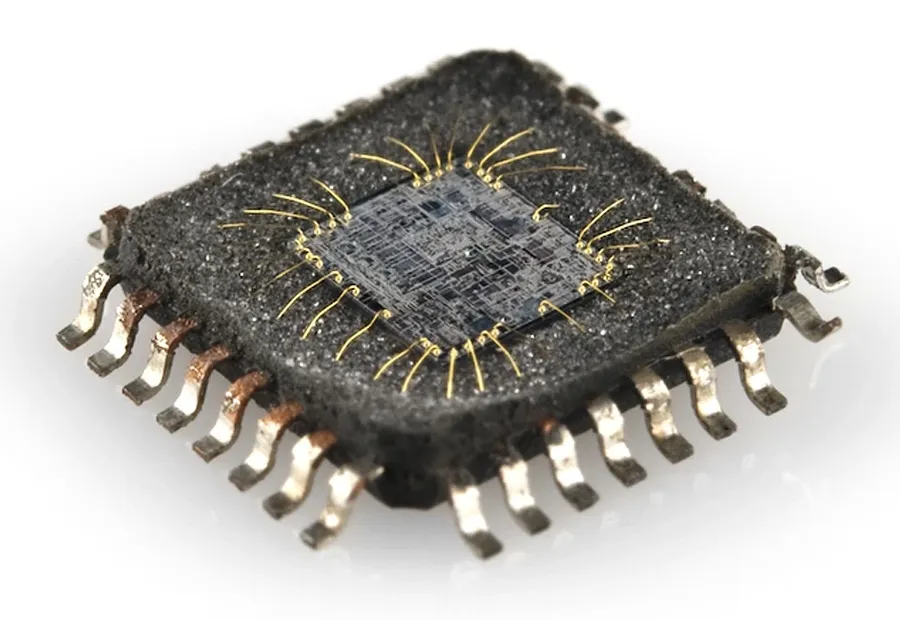
Integrated Circuits (ICs) are fundamental components of modern electronics, acting as the 'brains' of circuit boards. An IC is essentially a miniaturized electronic circuit (comprising transistors, resistors, capacitors, and other elements) fabricated on a small semiconductor chip. This integration allows for complex functionalities to be packed into a very small space, enabling the creation of sophisticated electronic devices.
ICs are the cornerstone of modern electronics, enabling complex functionalities within a small footprint. They are classified based on their functionality, scale of integration, and packaging. The miniaturization achieved through ICs has revolutionized electronics, facilitating the development of powerful yet compact devices.
| IC Type | Function | Examples | Typical Applications |
|---|---|---|---|
| Microcontrollers | Process and control data | ATmega328, ARM Cortex-M series | Embedded systems, IoT devices, robotics |
| Operational Amplifiers (Op-Amps) | Amplify electrical signals | LM741, TL081 | Signal conditioning, audio amplification |
| Logic Gates | Perform basic logic operations | 7400 series (AND, OR, NOT) | Digital circuits, combinational logic |
| Memory ICs | Store digital data | DRAM, SRAM, Flash | Computer memory, data storage |
| Analog-to-Digital Converters (ADCs) | Convert analog signals to digital | ADC0804, ADS1115 | Sensor interfaces, data acquisition |
IC packaging is crucial for both protection and connecting the chip to the circuit board. Common IC packaging styles include:
- Dual In-line Package (DIP)
Through-hole package, commonly used in prototyping and hobby electronics. Known for its easy installation, but larger in size. - Small Outline Integrated Circuit (SOIC)
Surface mount package, with smaller size than DIP, ideal for compact designs. - Quad Flat Package (QFP)
Surface mount package with pins on all four sides, suitable for high pin count ICs. - Ball Grid Array (BGA)
Surface mount package with solder balls instead of pins, enabling high pin density and better thermal dissipation, but require specialized mounting techniques.
Connectors: Linking Components
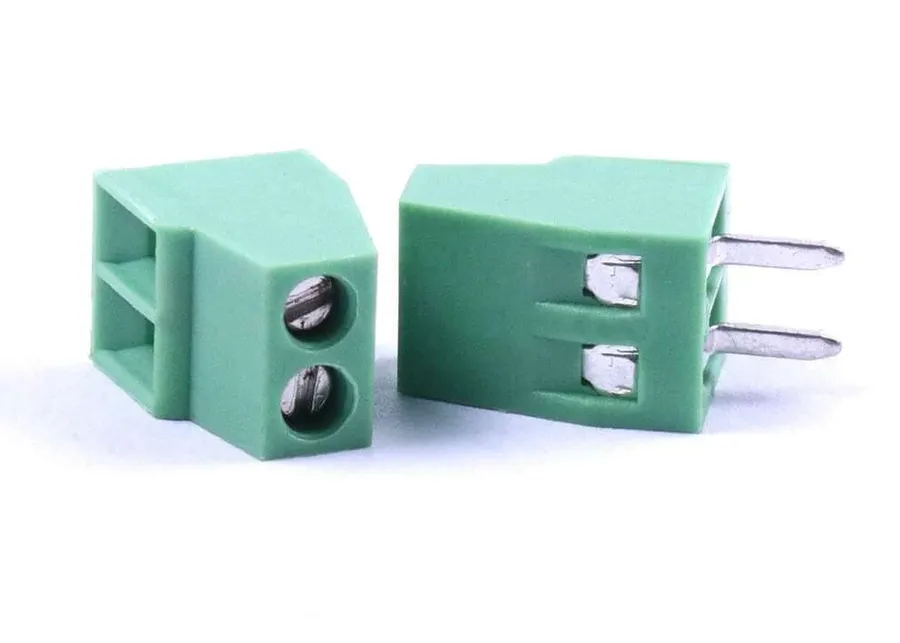
Connectors are essential components on a circuit board, serving as the crucial interface points for linking various parts of an electronic system. They facilitate the transfer of electrical signals and power, enabling the circuit board to communicate with other devices, power sources, and external peripherals. The appropriate selection and implementation of connectors are paramount for the overall functionality and reliability of any electronic system.
Connectors come in a wide array of types, each designed to meet specific needs and requirements. These variations in design, material, and functionality determine their suitability for particular applications. Here are a few common types and their applications:
- Headers
Headers are typically pin-based connectors used for board-to-board connections or for attaching cables. They can be male or female and often feature a standard grid spacing (e.g., 2.54mm or 0.1 inch). Headers are versatile and are found in many applications, including computer motherboards, development boards, and various industrial equipment. - Terminals
Terminals are designed to provide a point for connecting wires to a circuit board. These can include screw terminals, spring terminals, and blade terminals. They are frequently used for power connections, sensor interfaces, and other situations where robust and reliable wire connections are needed. - Edge Connectors
Edge connectors are located on the edge of a PCB and are designed to slide into a corresponding receptacle. These are often used for connecting expansion cards to a motherboard (e.g., PCI or PCIe slots). Edge connectors provide a strong physical and electrical connection. - Ribbon Connectors
Ribbon connectors, also known as flat cable connectors, are multi-pin connectors used to link multiple signals simultaneously, often used to connect display panels, disk drives and other interface boards. They simplify wiring by packaging multiple conductors in a flat configuration. - RF Connectors
RF connectors are specialized connectors used for high-frequency signals. These include types like SMA, BNC, and TNC connectors, essential for communications, wireless technology, and radio frequency applications. These connectors are designed to maintain signal integrity at higher frequencies and minimize signal loss.
Selecting the right connector for a given application involves considering several important parameters. Key factors include:
- Current and Voltage Rating
The connector must be able to handle the electrical current and voltage levels of the application without overheating or causing damage. Selecting a connector with a rating equal to or higher than the operating levels is essential for safety and reliability. This rating is important to prevent overloads and ensure consistent performance. - Pin Count and Layout
The number of pins and their arrangement must match the electrical requirements for the connection and should be appropriate for the application. Considerations include the number of signals, power lines, and ground connections needed. Proper spacing between pins can help in avoiding shorts or interference. - Mounting Style
The method of mounting the connector on the circuit board (e.g., surface mount, through-hole) must be compatible with the PCB design. Surface mount connectors save space and can be automated easily, while through-hole connectors provide a stronger mechanical bond with the board. The connector should match the mounting style of the board design to ensure easy integration. - Environmental Conditions
Factors such as temperature range, humidity, and exposure to corrosive substances should be considered when selecting a connector. Using connectors made with materials suitable for their environment improves reliability and longevity. - Durability and Mating Cycles
For applications where frequent connections and disconnections are necessary, select connectors designed for high durability. The number of mating cycles that a connector can endure without degradation is a critical parameter to ensure consistent functionality over the product lifecycle.
In conclusion, connectors play a fundamental role in the overall design and functionality of electronic systems, acting as the essential interface for electrical connections, power delivery, and communication with external devices. They must be selected judiciously to guarantee long-term reliability and optimum performance. Understanding the application-specific nuances and the variety of available connector types is vital in designing high-quality electronic products.
Frequently Asked Questions About Circuit Board Components
This section addresses common questions regarding circuit board components, providing practical insights for identification and understanding their functions. Understanding these components is essential for anyone working with or studying electronics.
- What are the fundamental components found on a circuit board?
Circuit boards typically feature a variety of components, each serving a specific function. Key components include resistors (controlling current), capacitors (storing charge), inductors (storing magnetic energy), diodes (allowing current in one direction), transistors (acting as switches and amplifiers), integrated circuits (complex electronic circuits on a chip), and connectors (facilitating connections to other parts of a system). These are the building blocks of most electronic devices. - What are the four basic passive components of an electronic circuit?
The four basic passive components in an electronic circuit are resistors, capacitors, inductors, and transformers. Unlike active components, these passive components do not require an external power source to operate. Resistors control current flow, capacitors store electrical charge, and inductors store energy in a magnetic field. Transformers are used for changing voltage and current levels in AC circuits. - How can I effectively identify electronic components on a circuit board?
Identifying components on a circuit board involves understanding their physical appearance, markings, and package types. Resistors often have color-coded bands indicating their resistance value. Capacitors may have numerical markings indicating capacitance and voltage rating. Diodes are typically marked with a line indicating the cathode side. Transistors and ICs usually have part numbers printed on them. Online databases and datasheets are valuable resources for detailed information about specific components based on these markings. Examining the component's shape, size, and specific placement on the PCB also helps in identification. - Which components of a circuit board possess intrinsic material value?
Certain components on a circuit board contain valuable materials. Gold is commonly used in connectors, pins, and contacts for its excellent conductivity and resistance to corrosion. Copper is used extensively for tracks and internal layers of the circuit boards, as well as in inductors. Silver, platinum, and palladium are sometimes present in small amounts in components like capacitors and ICs. These materials are not only valuable for recycling purposes but contribute to the overall performance and reliability of the circuit board. However, the cost of extraction may not always outweigh the value of the reclaimed material. - Are there specific tools or techniques that assist in identifying components on a PCB?
Yes, there are several tools and techniques that can help with component identification. A magnifying glass or a microscope can assist in reading small markings and distinguishing physical characteristics. Multimeters are essential for electrical testing to identify component types and basic functionality. Component testers, also called LCR meters (measuring inductance, capacitance, and resistance), allow you to test component values and tolerances. Circuit diagrams and reference materials can also help in identifying components based on their circuit placement. - How does the physical size of a component relate to its functional characteristics?
The physical size of a component often correlates with its power rating, current handling capability, and in some cases, its performance. Larger resistors, for instance, are usually designed to handle higher power dissipation. Larger capacitors can store more charge, and larger inductors may handle more current or have higher inductance. However, advancements in technology have allowed the miniaturization of components, so size is not always the sole indicator of a component's electrical specifications. For example, surface mount device components (SMD) are much smaller compared to through-hole components, yet they can handle equal or greater loads
Understanding the various components of a circuit board – resistors, capacitors, inductors, diodes, transistors, and integrated circuits – is fundamental to appreciating the complexity and ingenuity behind modern electronics. Each component, with its unique role, works in concert to enable the devices we rely on every day. As technology continues to advance, the principles of these circuit board components will remain vital, driving future innovations and shaping our digital world. Whether you're an electronics enthusiast or a casual observer, this knowledge empowers a deeper connection with the technology that permeates our lives.
 AnyPCBA
AnyPCBA